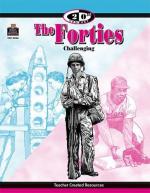|
This section contains 418 words (approx. 2 pages at 300 words per page) |

|
Power.
During the 1940s the power of organized labor in the United States was at its height; at no other time in American history did labor unions exercise so much power and influence. Much of this power came from labor's close relationship with the Democratic Party and the labor shortages created by World War II. During the war membership in unions expanded dramatically, aided by the National War Labor Board (NWLB). In 1941, 10.5 million workers belonged to a labor union; by 1945 the number of union members had reached 14.7 million men and women.
Manpower Shortage.
The largest labor organizations, the American Federation of Labor (AFL) and the Congress of Industrial Organizations (CIO), both agreed to a nonbinding no-strike pledge for the duration of the war, but labor leaders soon became disenchanted with the NWLB as the agency implemented wage controls as an...
|
This section contains 418 words (approx. 2 pages at 300 words per page) |

|




